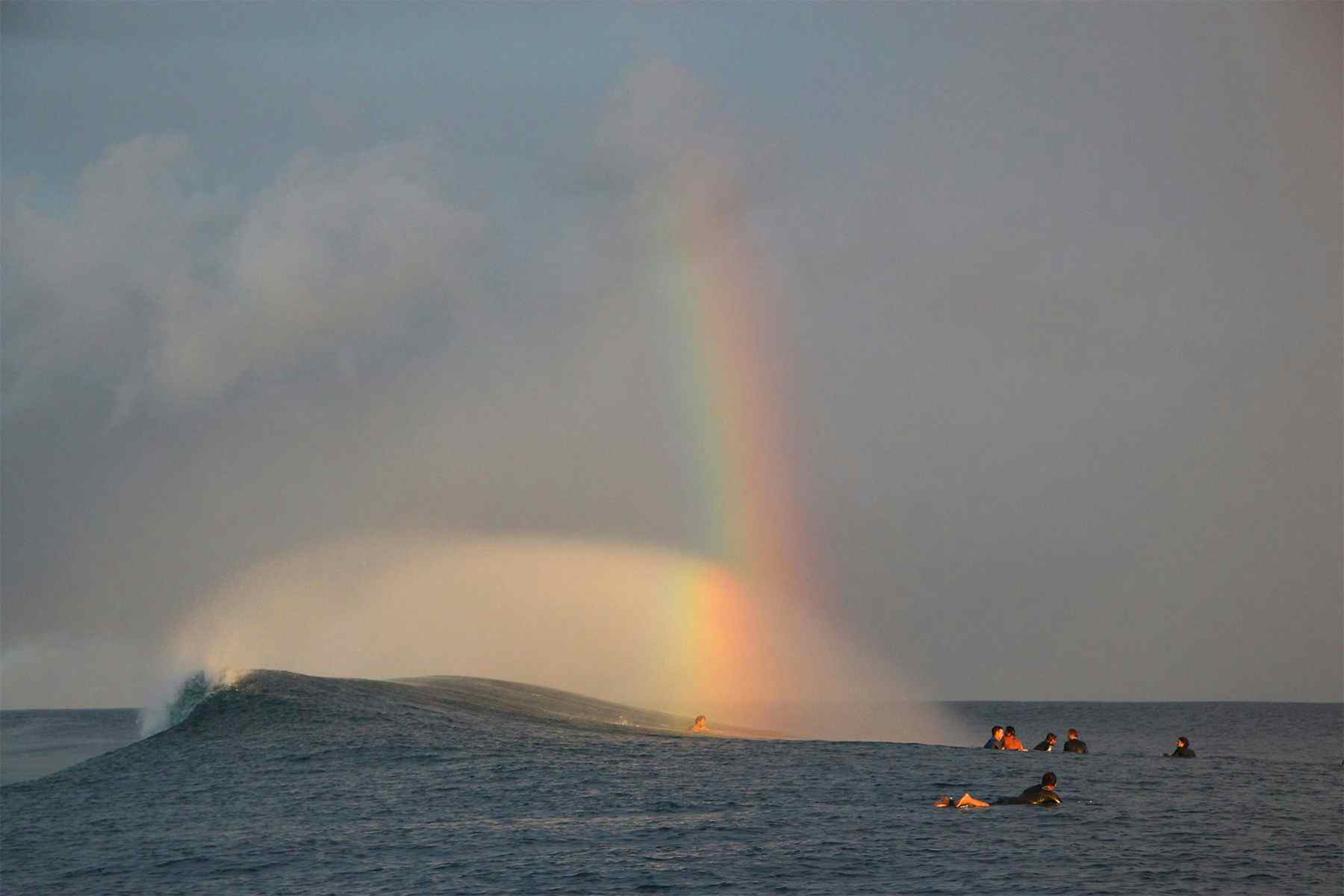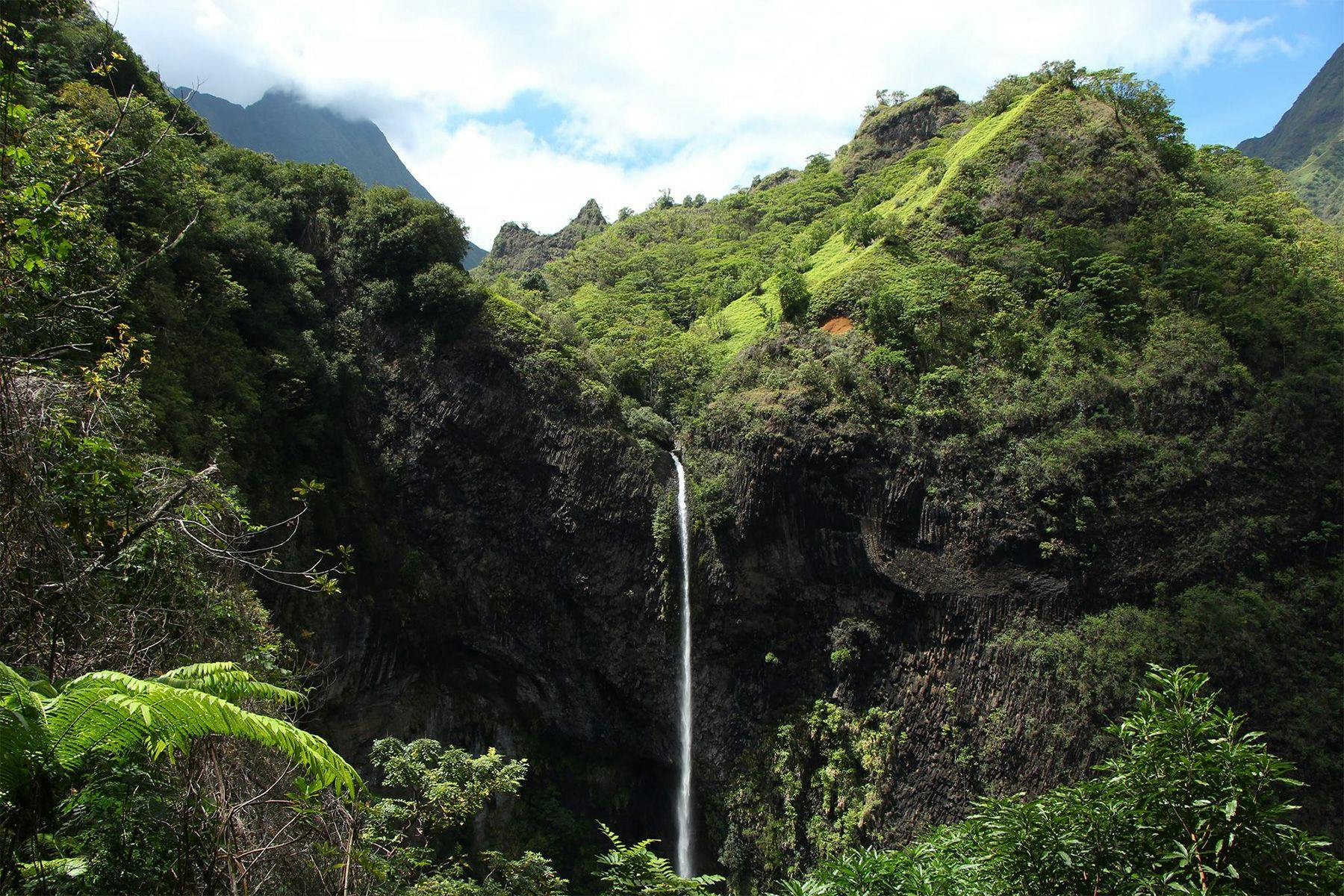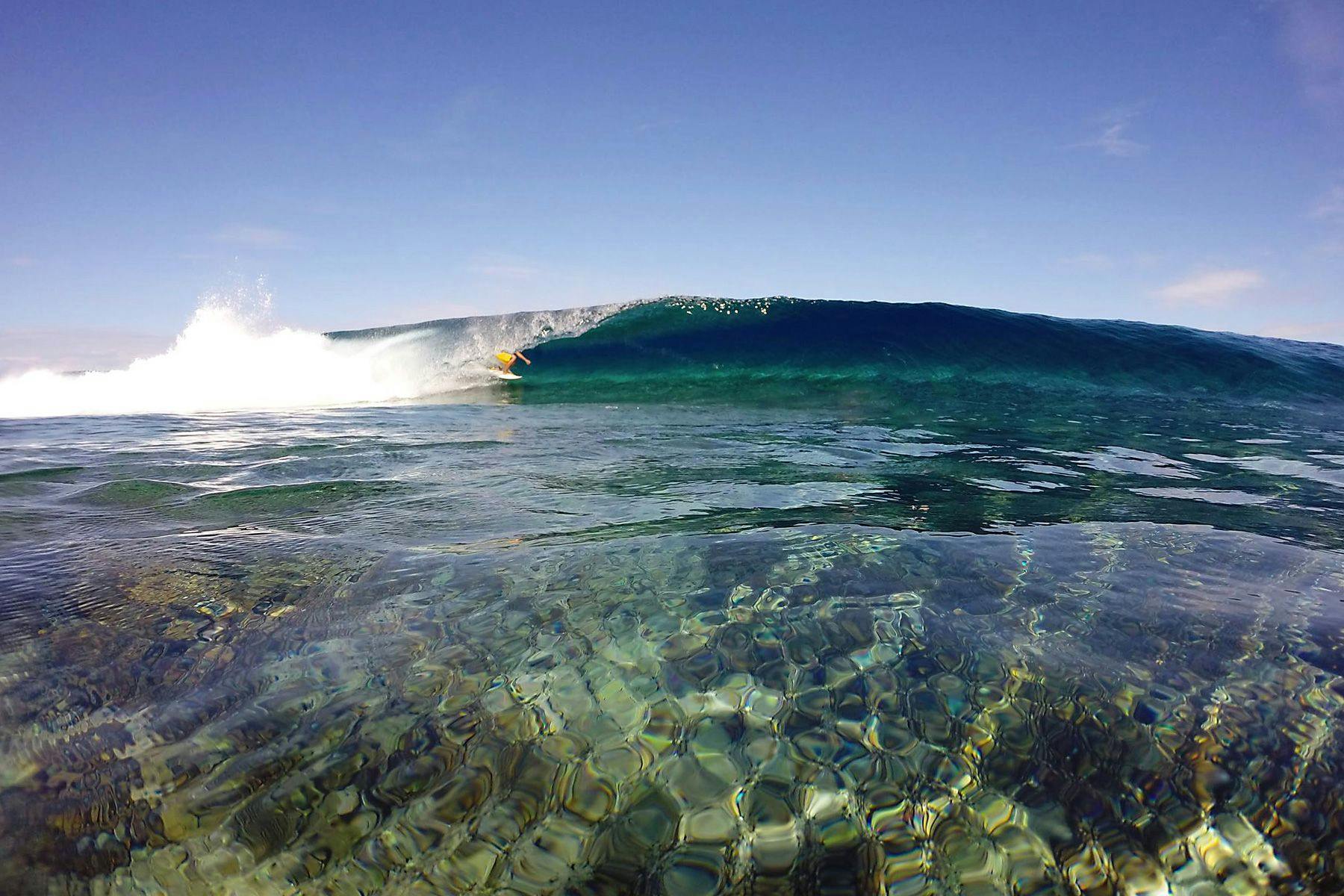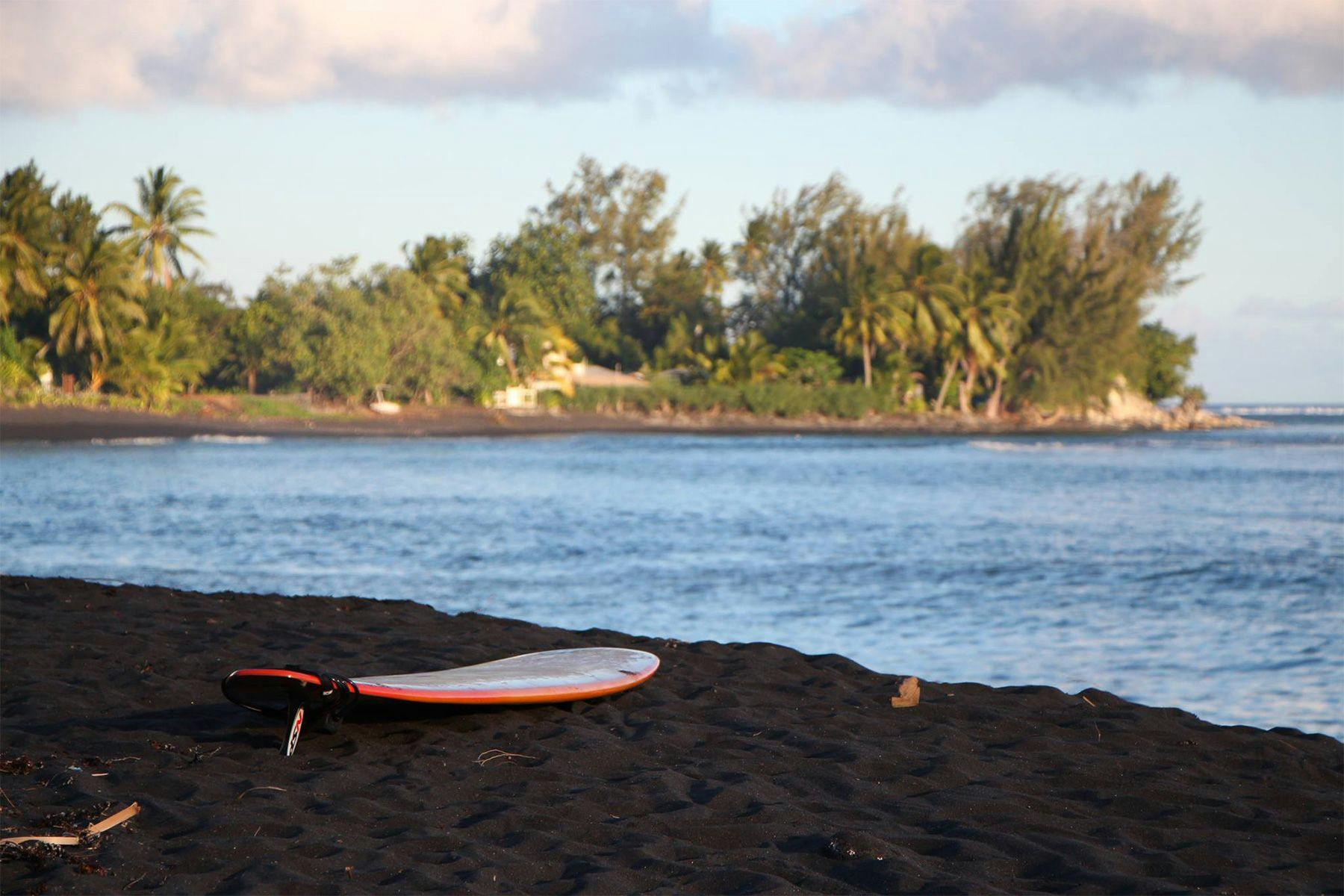TravelDeparture Gate: Tahiti (South Coast)

Polynesia: A place associated with many things, from classic “desert” islands through coconuts and the development of navigation, to traditional tattoos. Polynesians are a people of the sea, out of which they developed their society and gained notoriety, and their land is one of traditions where despite globalization you still find the true polynesian spirit in the eyes of locals. It is a place that lays claim to being the birthplace of surfing as we know it. Amidst all of these associations, one thing is certain: there is no shortage of quality waves.
Despite having the prefix French, less than 10% of French Polynesia’s inhabitants originate from France; so French Polynesia is still very much Polynesia. The archipelago is spread along roughly 2000km (1,200mi) of Pacific Ocean and consists of over 100 main islands (not including islets and atolls), which in turn are separated into administrative subdivisions: Marquesas Islands, Society Islands (Windward Islands and Leeward Islands), Tuamotu Archipelago, Gambier Islands, Austral Islands and Bass Islands.

Tahiti is part of the Windward group of the Society Islands, together with Moorea, Maiao and other smaller islets. It is the largest and highest island in French Polynesia, as well as the most populated. It has nearly 200km of coastline surrounded by a wall of reef, punctuated by passes that create the magical formula for perfect waves. Swells have an unobstructed approach to the southern part of the island, and when they meet its many passes and shallow reefs the result is powerful and perfectly shaped waves. The island is divided in Tahiti Nui (“big Tahiti”) and Tahiti Iti (“small Tahiti”), with a narrow strip of land connecting both parts. With mountainous terrain in the centre (highest point Mount Orohena, 2200m) the landscape is covered by steep rainforests that seem to rise straight out of the ocean, ceding only a small amount of space to villages, rivers and beaches. In the wet season (December-March) the best swells come from the north, reducing the potential of good waves at the spots in the south. But from May to August the south coast (and Tahiti in general) gets its best swells, usually generated by low pressure systems originating in Antartica and off the coast of New Zealand.
Regardless of how you get to Tahiti, your port of arrival will be Papeete. Being the only city in Tahiti (and in French Polynesia), it’s the location of all the conveniences of modern life. Even though Tahiti is a rather well-developed place (especially considering its location), outside of Papeete you’ll find mostly villages and the occasional small town. Fortunately for travellers and locals, there’s a coastal road that circumnavigates and connects both Tahiti Nui and Tahiti Iti, so moving around is easy.

Only 10km away from Papeete’s city centre (even closer if you arrive by plane at Faa’ International Airport) is the legendary left of Taapuna. Even before Teahupo’o became famous around the world, Taapuna already had the respect of the locals, for a good reason. This wave is more popular among bodyboarders due to the difficulty of its take off and the need for a speed-of-light pop up. Plus, the throwing lip and shallow water over razor sharp reef add to the challenge of standing on a craft. To get to the wave you’ll need to either paddle for 20 minutes from the car park (just off the main road), or get a boat ride with local fishermen or fellow surfers. If the swell is good there are many boats moored in the channel, so it’s easy to catch a ride back.
Once out, you’ll notice the wave has three different sections, which vary depending on the swell and its intensity. It’d be wise to work your way up towards the outer – and thus hollower – section in order to get a feel for the wave. Beginners shouldn’t venture out to this spot, even if the swell is small, as Taapuna’s unpredictability never rests. Its consistency and quality is both a blessing and a curse, because when paired with its proximity to Papeete the result is that it attracts crowds. Westerly swells work best and tides are not a major factor. It’s one of those waves where you’ll either get the best barrel of your life, or the worst wipe-out.

About 20km south of Taapuna, following the coastal road, you’ll reach the spot of Maraa, shortly after passing the town of Taverea. The pass is clearly visible from the road, but the wave itself is not that accessible, meaning there’s the need for either a boat ride or another 20min paddle across the lagoon. The left of Maraa is as hollow, fast, powerful and shallow as Taapuna, only less crowded. Experience in fast, hollow surf is required in order to make the take off and keep up with the speed of the wave. It’s not worth attempting to surf it on low tide, or if the swell is smaller than 3ft, since the sharp reef will be far too exposed. A 6ft, W/SW/S swell mixed with E/NE winds would be the ideal conditions, but the spot can hold up to 10ft pulses. Once again, it’s wise to sit for a while and watch the wave in order to understand its sections and make the most of its long walls. Make sure to paddle out with your most reliable short-board or step-up (preferably one with a little more rocker, designed for tube riding).

The ferociousness of the waves cool as you reach the spot of Papara (or Taharuu), 10km SE of Maraa. The beach of Taharuu has a large parking area, with a cafe, toilets and free outdoor showers. It can be best described as a river-mouth/black sand beach-break ,with pebbles on the bottom and even the occasional patch of reef. This is the most popular beach break in Tahiti and is suitable for all levels of surfers, allowing both right and left rides, on most stages of tide. Due to the influence of the river that flows down from the mountains, the bottom is constantly changing and so are the peaks, which makes it a hard wave to read and usually not a very long ride. It is a great option when the swell drops or when it’s too big at the reefs. But regardless, you’re likely to be accompanied by many other surfers, especially if the swell is coming straight from the south and the breeze is running down the mountains, south bound and offshore. This is the ideal spot for periods of smaller swell and/or if you need to rest your arms without staying out of the water.
As you get to the town of Taravao (the connecting point between Tahiti Nui and Tahiti Iti) there’s the possibility of following the road eastwards along the north coast, or heading down the south coast, towards Teahupo’o.

Going south, almost half-way between Taravao and Teahupo’o, there’s the spot of Vairao. This incredibly consistent and uncrowded wave lives on the shadows of its neighbour’s fame, but deserves recognition. The downside (as with most passes in Tahiti) is inaccessibility. It’s a rather long paddle from the village of Vairao, but if the charts are glowing light blue or green (anything higher than 3ft) coming from the SW/S it’s worth the mission. The south corner of the reef pass (where the left-hand breaks) turns sharply back on itself, forming a bay of coral and causing the swell to wrap around it, producing longer waves.
Similar to its Tahiti Nui’s sisters, Vairao is a hollow, fast and long wall that demands respect. Not only is the wave hard to master, but as the tide changes there’s often a strong current that pulls you away from the channel and thus deeper into the peak. That being said, both the wave and the current are more organised on mid-high tide and anything bigger than 12ft becomes risky, even for experienced surfers. Definitely bring a fast short-board that you are confident will hold into the wall on take off. Consider a gun if the swell picks up.

Last but by no means least, is the spot that needs no introductions.
Teahupo’o is the end of the southern coastal road, but the beginning of an extraordinary experience. “The pile of heads”, as it’s literally translated, can oddly enough be quite gentle at times but then makes up for its momentary quietude with serious walls of water and heavy lips. Locals say the wave has teeth and most dare not disagree.
Teahupo’o is a great example of how the bathymetry of the sea bed and reef influences the shape of the wave; the level of the saltwater lagoon is tormented when a swell approaches the wall of reef (a mountain-shaped undersea formation that drops drastically from near the surface to 150ft deep) sucking the water off the impact zone, often down to a mere 3ft deep and placing the surfer below sea level, face-to-face with a floor of sharp coral and a wall of water that is 2-3 times bigger than the back of the wave. It is an amazing spectacle to behold, even if not experienced first hand.

Little needs to be said about Teahupo’o’s features, and even less about its hazards. It is without a doubt an “experts only” wave, even if the swell is not that big and the wave seems rideable. It starts working at 3ft and holds swells in excess of 16ft, predominantly from the south. Besides the daunting beauty of its waves, Teahupo’o is a charming village set in picturesque surroundings, worth seeing at sunrise or sunset. Should you consider going for a paddle bring a gun/semi-gun to make sure you’re not outrun by the wave. It is easily accessible when the swell is good since there are boats going back and forth from shore, but is a long 30 minute paddle otherwise.

After some time in Tahiti it’s possible to understand why the place has such a positive reputation. It’s not only the great waves, warm water, sunny weather, good food or intriguing traditions that make you not want to leave; there’s an almost utopian pace to life that is rare in our modern society, and that when combined with these features and the generosity of the locals, elevates Tahiti’s status to “paradise”.
Where: Fly to Fa’a’ International Airport (PPT) and hire a car/motorbike to drive around the island.
When: April to September; or May to August for even more consistent swells.
Why: Long, barreling walls of crystal clear warm water, with picturesque settings and amazing culture and people.
How: A couple of short-boards for smaller days and manoeuvrability, and guns/semi-guns for tube riding and fast reef breaks.
Our thanks to Nick Stokes for sharing with us a selection of his incredible and until-now unseen photographs from Tahiti.